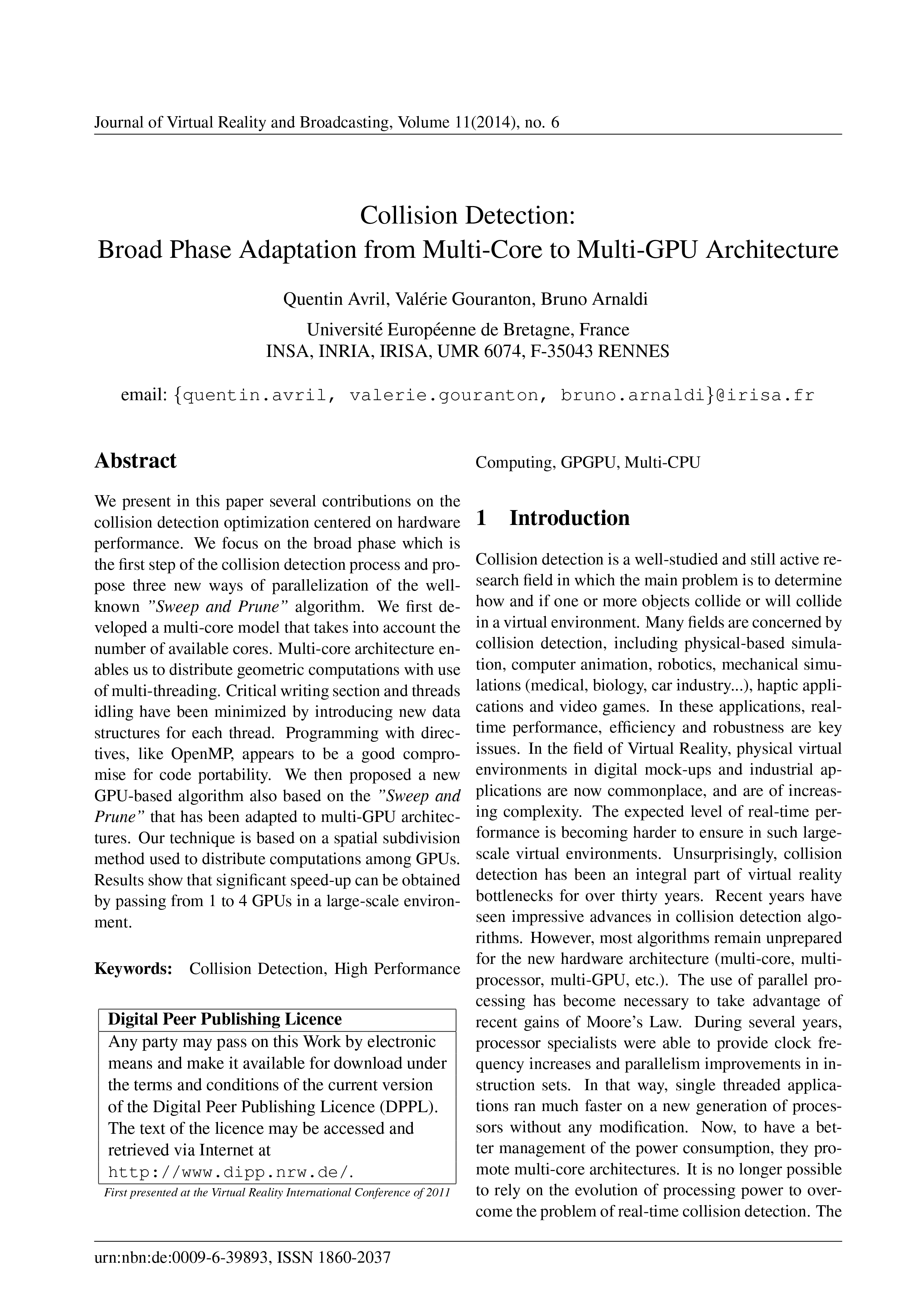Collision Detection: Broad Phase Adaptation from Multi-Core to Multi-GPU Architecture
DOI:
https://doi.org/10.20385/1860-2037/11.2014.6Keywords:
Collision Detection, GPGPU, High Performance Computing, Multi-CPUAbstract
We present in this paper several contributions on the collision detection optimization centered on hardware performance. We focus on the broad phase which is the first step of the collision detection process and propose three new ways of parallelization of the well-known Sweep and Prune algorithm. We first developed a multi-core model takes into account the number of available cores. Multi-core architecture enables us to distribute geometric computations with use of multi-threading. Critical writing section and threads idling have been minimized by introducing new data structures for each thread. Programming with directives, like OpenMP, appears to be a good compromise for code portability. We then proposed a new GPU-based algorithm also based on the "Sweep and Prune" that has been adapted to multi-GPU architectures. Our technique is based on a spatial subdivision method used to distribute computations among GPUs. Results show that significant speed-up can be obtained by passing from 1 to 4 GPUs in a large-scale environment.
Published
2014-10-21
Issue
Section
VRIC 2011





